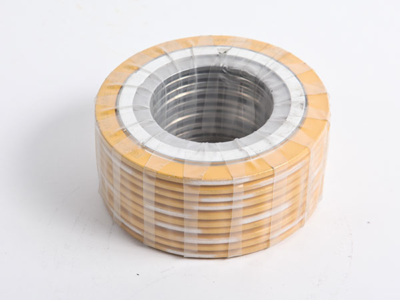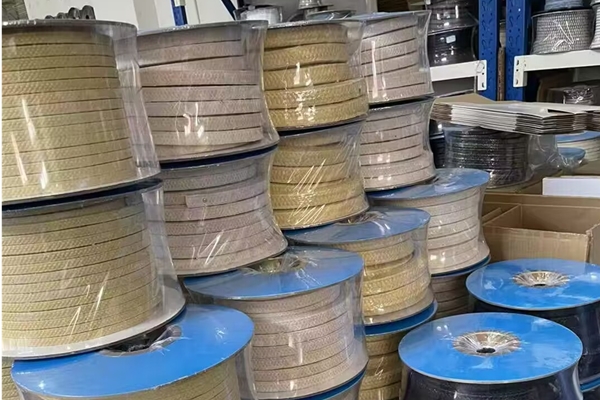Types of Spiral Wound Gaskets
Spiral wound gaskets are composed of metal winding strips and non-metal filler strips wound alternately. The commonly used materials for metal winding strips are 304SS stainless steel and 316L/316SS stainless steel, while the non-metallic filler strips are usually made of graphite or PTFE (polytetrafluoroethylene).
To accommodate different types of flange sealing surfaces, Spiral wound gaskets are generally categorized into four types: basic type A, inner ring type B, outer ring type C, and inner&outer ring type D. The appropriate gasket type is selected based on the flange surface type.
Selection of Spiral Wound Gaskets
When selecting Spiral wound gaskets, the gasket standard should align with the flange standard. First, identify the working pressure, flange standard, and type to determine the structure type and pressure rating of the Spiral wound gasket. Then, choose the metal winding strip material and non-metallic filler material based on the working temperature and chemical corrosion characteristics of the sealing medium. The chosen materials must withstand the working temperature and corrosion. Finally, select the gasket size according to the nominal diameter and structure of the flange, and label the chosen gasket according to standard examples. For non-standard wound gaskets, determine the materials of the metal and non-metal parts, the gasket’s structural dimensions, and consider factors such as sufficient gasket stress to ensure sealing, preventing excessive compression, the installation structure designed for the gasket (usually determined by the matching flange’s structural dimensions), safety characteristics of installing large gaskets, and the impact of non-standard gasket structures on overall equipment costs.
Installation and Use of Spiral Wound Gaskets
Metal gaskets primarily connect two components. Despite their small size, they play a significant role. To prevent leakage, installation must adhere to specific requirements to avoid issues affecting the normal operation of machinery.
- Common Installation Tips: Ensure the gasket and the pipe are concentric during installation. Use the outer reinforcing ring to contact the inner circumference of the bolts for positioning, avoiding eccentric installation. When installing basic-type spiral wound gaskets in tongue-and-groove flange sealing surfaces, ensure consistent gaps with the groove wall.
- Installing Narrow Metal-Clad Gaskets: Place a steel plate of a certain thickness outside the gasket and then tighten the flange to prevent the filler inside the gasket from expanding the metal casing joints or seams under pressure, which could damage the gasket.
- High-Temperature Flanges: When the flange working temperature exceeds 200°C, apply sealant between the flange sealing surface and the gasket to prevent sintering at high temperatures, which could complicate maintenance and gasket replacement.
- Uneven Sealing Surfaces: If the sealing surface is uneven, apply sealant before installing the gasket. Sealants typically consist of manganese dioxide, red lead, graphite powder, and boiled linseed oil (drying oil). Choose the appropriate type and grade of liquid sealant based on the sealing medium, working temperature, and medium pressure.
- Metal Gasket Installation: When metal ring gaskets and flange sealing grooves are not ideally matched, lapping can achieve a tight fit. For large-diameter metal ring gaskets, lapping is more difficult. To fill minor surface irregularities, sealant can be used.





